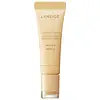What's inside
What's inside
 Key Ingredients
Key Ingredients

 Benefits
Benefits

 Concerns
Concerns

 Ingredients Side-by-side
Ingredients Side-by-side

Hydrogenated Polyisobutene
EmollientPhytosteryl/Isostearyl/Cetyl/Stearyl/Behenyl Dimer Dilinoleate
Skin ConditioningDiisostearyl Malate
EmollientPolybutene
Hydrogenated Poly(C6-14 Olefin)
EmollientPhytosteryl Isostearyl Dimer Dilinoleate
EmollientMicrocrystalline Wax
Emulsion StabilisingButyrospermum Parkii Butter
Skin ConditioningSucrose Tetrastearate Triacetate
EmollientEthylene/Propylene/Styrene Copolymer
Mica
Cosmetic ColorantEuphorbia Cerifera Wax
Astrocaryum Murumuru Seed Butter
EmollientSynthetic Wax
AbrasiveParfum
MaskingCandelilla Wax Esters
Dehydroacetic Acid
PreservativePolyglyceryl-2 Triisostearate
EmulsifyingButylene/Ethylene/Styrene Copolymer
Methicone
EmollientCI 77492
Cosmetic ColorantCI 77891
Cosmetic ColorantCopernicia Cerifera Wax
CI 19140
Cosmetic ColorantPentaerythrityl Tetra-Di-T-Butyl Hydroxyhydrocinnamate
AntioxidantLimonene
PerfumingTocopherol
AntioxidantTriethoxycaprylylsilane
Hydrogenated Polyisobutene, Phytosteryl/Isostearyl/Cetyl/Stearyl/Behenyl Dimer Dilinoleate, Diisostearyl Malate, Polybutene, Hydrogenated Poly(C6-14 Olefin), Phytosteryl Isostearyl Dimer Dilinoleate, Microcrystalline Wax, Butyrospermum Parkii Butter, Sucrose Tetrastearate Triacetate, Ethylene/Propylene/Styrene Copolymer, Mica, Euphorbia Cerifera Wax, Astrocaryum Murumuru Seed Butter, Synthetic Wax, Parfum, Candelilla Wax Esters, Dehydroacetic Acid, Polyglyceryl-2 Triisostearate, Butylene/Ethylene/Styrene Copolymer, Methicone, CI 77492, CI 77891, Copernicia Cerifera Wax, CI 19140, Pentaerythrityl Tetra-Di-T-Butyl Hydroxyhydrocinnamate, Limonene, Tocopherol, Triethoxycaprylylsilane
Diisostearyl Malate
EmollientBis-Diglyceryl Polyacyladipate-2
EmollientHydrogenated Polyisobutene
EmollientButyrospermum Parkii Butter
Skin ConditioningSynthetic Wax
AbrasiveCera Microcristallina
Emulsion StabilisingMica
Cosmetic ColorantIsostearyl Alcohol
EmollientHelianthus Annuus Seed Oil
EmollientAroma
Ethylhexyl Palmitate
EmollientEthylene/Propylene/Styrene Copolymer
Tocopheryl Acetate
AntioxidantDimethicone
EmollientTricholoma Matsutake Extract
Skin ConditioningTribehenin
EmollientDehydroacetic Acid
PreservativeButylene/Ethylene/Styrene Copolymer
Sorbitan Isostearate
EmulsifyingSodium Saccharin
MaskingPolyglyceryl-2 Diisostearate
EmulsifyingLimonene
PerfumingPalmitoyl Tripeptide-8
Skin ConditioningTitanium Dioxide
Cosmetic ColorantCI 15850
Cosmetic ColorantDiisostearyl Malate, Bis-Diglyceryl Polyacyladipate-2, Hydrogenated Polyisobutene, Butyrospermum Parkii Butter, Synthetic Wax, Cera Microcristallina, Mica, Isostearyl Alcohol, Helianthus Annuus Seed Oil, Aroma, Ethylhexyl Palmitate, Ethylene/Propylene/Styrene Copolymer, Tocopheryl Acetate, Dimethicone, Tricholoma Matsutake Extract, Tribehenin, Dehydroacetic Acid, Butylene/Ethylene/Styrene Copolymer, Sorbitan Isostearate, Sodium Saccharin, Polyglyceryl-2 Diisostearate, Limonene, Palmitoyl Tripeptide-8, Titanium Dioxide, CI 15850
 Reviews
Reviews

Ingredients Explained
These ingredients are found in both products.
Ingredients higher up in an ingredient list are typically present in a larger amount.
We don't have a description for Butylene/Ethylene/Styrene Copolymer yet.
This ingredient is also known as shea butter. It is an effective skin hydrator and emollient.
Emollients help soothe and soften your skin. It does this by creating a protective film on your skin. This barrier helps trap moisture and keeps your skin hydrated. Emollients may be effective at treating dry or itchy skin.
Shea butter is rich in antioxidants. Antioxidants help fight free-radicals, or molecules that may harm the body. It is also full of fatty acids including stearic acid and linoleic acid. These acids help replenish the skin and keep skin moisturized.
While Shea Butter has an SPF rating of about 3-4, it is not a sunscreen replacement.
Shea butter may not be fungal acne safe. We recommend speaking with a professional if you have any concerns.
Learn more about Butyrospermum Parkii ButterDehydroacetic Acid is fungicide and bactericide. It is used as a preservative in cosmetics. Preservatives help elongate the shelf life of a product.
Dehydroacetic Acid is not soluble in water.
Diisostearyl Malate is an emollient and most often used in lip products. It comes from isostearyl alcohol, a fatty acid, and malic acid, an AHA.
As an emollient, Diisostearyl Malate helps create a thin film on your skin to trap moisture in. This helps keep your skin soft and smooth.
We don't have a description for Ethylene/Propylene/Styrene Copolymer yet.
Hydrogenated Polyisobutene is a synthetic polymer. Polymers are compounds with high molecular weight. Hydrogenated Polyisobutene is an emollient and texture enhancer.
In one study, Hydrogenated Polyisobutene showed better skin hydration levels than Caprylic/Capric Triglyceride. As an emollient, it helps keep your skin soft and hydrated by trapping moisture in.
Hydrogenated Polyisobutene is often used as a mineral oil replacement.
Learn more about Hydrogenated PolyisobuteneLimonene is a fragrance that adds scent and taste to a formulation.
It's found in the peel oil of citrus fruits and other plants such as lavender and eucalyptus. The scent of limonene is generally described as "sweet citrus".
Limonene acts as an antioxidant, meaning it helps neutralize free radicals.
When exposed to air, oxidized limonene may sensitize the skin. Because of this, limonene is often avoided by people with sensitive skin.
The term 'fragrance' is not regulated in many countries. In many cases, it is up to the brand to define this term. For instance, many brands choose to label themselves as "fragrance-free" because they are not using synthetic fragrances. However, their products may still contain ingredients such as essential oils that are considered a fragrance.
Learn more about LimoneneMica is a naturally occurring mineral used to add shimmer and color in cosmetics. It can also help improve the texture of a product or give it an opaque, white/silver color.
Serecite is the name for very fine but ragged grains of mica.
This ingredient is often coated with metal oxides like titanium dioxide. Trace amounts of heavy metals may be found in mica, but these metals are not harmful in our personal products.
Mica has been used since prehistoric times throughout the world. Ancient Egyptian, Indian, Greek, Roman, Aztec, and Chinese civilizations have used mica.
Learn more about MicaSynthetic Wax is created from fossil fuels such as natural gas. It is used to enhance texture, adjust pH, and as an occlusive.
It may also be used as an abrasive ingredient to exfoliate the skin.
Synthetic Wax may not be fungal acne safe.
Learn more about Synthetic Wax